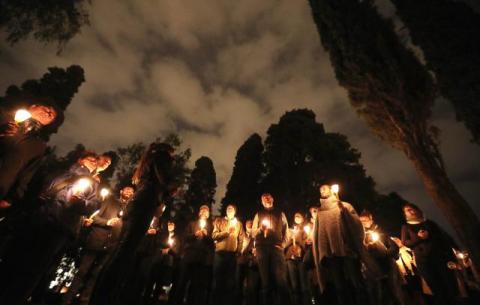Cementiris de Barcelona, S.A

Service Details
Cementiris de Barcelona aims to inform everyone the cultural and funerary heritage which keep the cemeteries of the city.
For this reason, we organize guided tours in the cemeteries of Montjuïc, Poblenou and Les Corts, which aims to promote that heritage and show the monumental part of our emblematic cemeteries.
Is a travel to the past and the present in which are historical, popular characters and adventures, as well as stories of wealth and poverty, love and death.
In addition, these routes are part of the European Route of Cemeteries, recognized by the Council of Europe Cultural Route as from 2010.
Visits can be done any day of the week, or with a guide during the weekends.
Route for the cemetery of Poblenou
The route by the cemetery of Poblenou consists of a visit focused on the Barcelona of the 19th century from different pantheons and interred most interesting historical and cultural characters. The route comprises 29 graves, basically neoclassical style, and begins in 1775, when the Bishop Climent blessed the cemetery, and concludes with the Universal exhibition of 1888. Stands to make the route individually: flat, detailed guide and App with audio-guide in Catalan, Spanish and English.
Route for the cemetery of Montjuïc
The route by the cemetery of Montjuc focuses chronologically between the years 1883 and 1936 and includes 37 graves of largely modernist style. It is intended as a sample of the rich heritage of the burial site, because it combines graves of graves of historical artistic interest.
Supports to make the route individually: map and detailed guide.
Funeral Carriage Collection; the most important of Europe
The route through the cemetery of Montjuïc attendees can visit at the end of its route the Funeral Carriage Collection, a sample of vehicles from the 18th and 19th centuries, consisting of 13 hearses, funeral 6 carriages of accompaniment and 3 motor cars. The clear commitment by the use of the most innovative technologies within the space makes visitors can move completely to the Barcelona of the past.
Pedagogical activities in the funeral carriage collection using teaching material, classified by school cycles and designed from pedagogy to fit with the set of educational school, different activities are offered to explain funeral rituals of the 19th and 20th centuries and to understand death as a natural fact. Similarly, visit facilitates a overview of the history of Barcelona in those years. In the collection activities are organized for students of primary, secondary and baccalaureate and free visits for groups.
Route for the Fossar de la Pedrera
The "Fossar de la Pedrera" of the cemetery of Montjuïc is a memorial dedicated to the victims of repression and the Francoist bombings. The Fossar inside, among other monuments, the tomb of President Lluís Companys. It also contains the remains of victims of the repression in the rearguard and bombings during the Civil War, and a good number of people who died shot in Barcelona during the postwar period.
Route for the cemetery of Les Corts
This route, which premiered in March 2016, emphasizes the various personalities who rest in the burial site and is also interesting from a sculptural and cultural perspective. Thus, participants visit the graves of Frederic Marès, sculptor; de Pere Català-Roca, photographer and historian; Joan Capri, actor and humorist and some of the big names of FC Barcelona, such as the players like Josep Samitier, Estanislau Basora, Ladislao Kubala or Javier Urruticoechea. In addition, route modernist includes the Hebrew cemetery oldest active in Barcelona and a recently restored chapel of inspiration
Route "Fossar de la Pedrera"
The first Saturday of each month to 11.00 hours
Next visits: from October.
Visit Funeral Carriage Collection
Every Saturday 12.00 hours
The Collection is open every Saturday and Sunday from 10 to 14 hours.
Also, cemeteries of Barcelona organize for groups guided tours tailored
from Monday to Friday. Book by phone, previously.
No need to book for individual visits or lower groups to 10 people.


